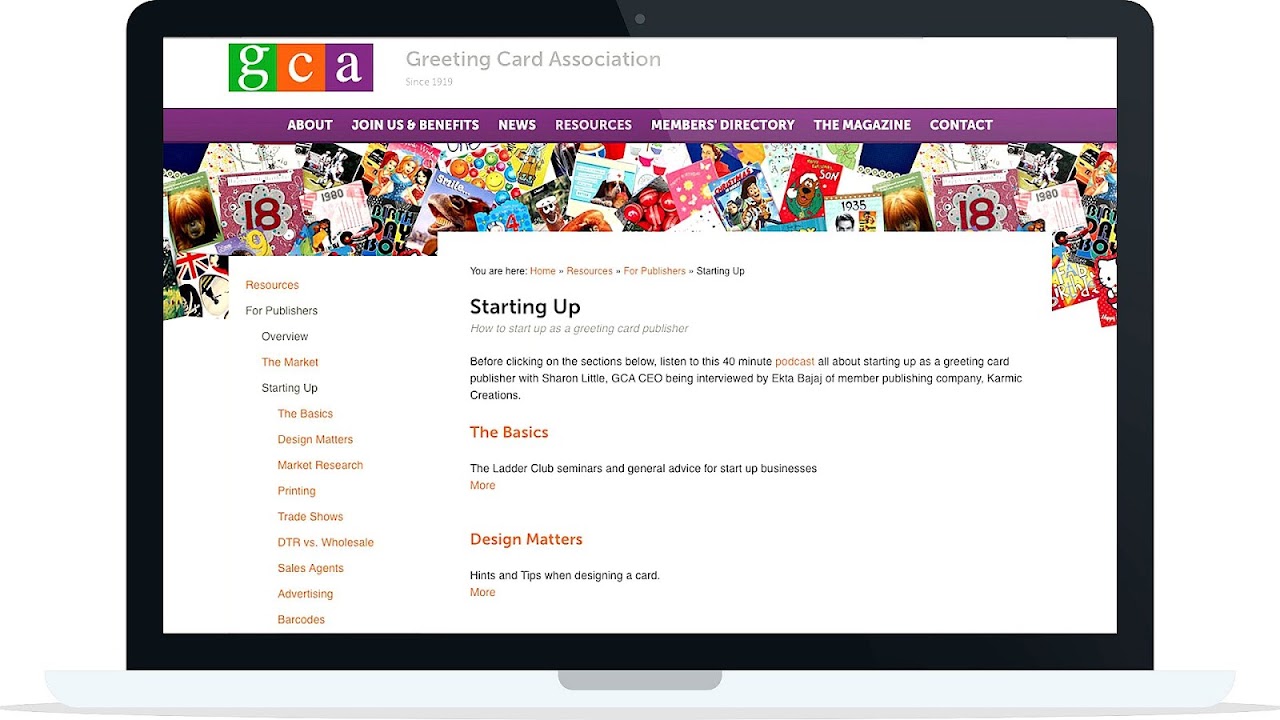
A greeting card is an illustrated piece of card or high quality paper featuring an expression of friendship or other sentiment. Although greeting cards are usually given on special occasions such as birthdays, Christmas or other holidays, such as Halloween, they are also sent to convey thanks or express other feelings (such as to Get-well from illness). Greeting cards, usually packaged with an envelope, come in a variety of styles. There are both mass-produced as well as handmade versions that are distributed by hundreds of companies large and small. While typically inexpensive, more elaborate cards with die-cuts or glued-on decorations may be more expensive.
Hallmark Cards and American Greetings are the two largest producers of greeting cards in the world today (both are U.S-based companies).
In Western countries and increasingly in other societies, many people traditionally mail seasonally themed cards to their friends and relatives in December. Many service businesses also send cards to their customers in this season, usually with a universally acceptable non-religious message such as "happy holidays" or "season's greetings".
The Greeting Card Association is an international trade organization representing the interests of greeting card and stationery manufacturers. John Beeder, former president of the Greeting Card Association, says greeting cards are effective tools to communicate important feelings to people you care about: "Anyone feels great when they receive an unexpected card in the mail. For me, there's nothing like a greeting card to send a special message. I'm proud to be a part of an industry that not only keeps people connected, but uses both imagery and the power of words to help us express our emotions."

Maps, Directions, and Place Reviews
Types of greeting cards
Counter cards: Greeting cards that are sold individually. This contrasts with boxed cards.
Starting A Greeting Card Business Video
History
The custom of sending greeting cards can be traced back to the ancient Chinese, who exchanged messages of good will to celebrate the New Year, and to the early Egyptians, who conveyed their greetings on papyrus scrolls. By the early 15th century, handmade paper greeting cards were being exchanged in Europe. The Germans are known to have printed New Year's greetings from woodcuts as early as 1400, and handmade paper Valentines were being exchanged in various parts of Europe in the early to mid-15th century, with the oldest Valentine in existence being in the British Museum.
By the 1850s, the greeting card had been transformed from a relatively expensive, handmade and hand-delivered gift to a popular and affordable means of personal communication, due largely to advances in printing, mechanization, and a reduction in postal rates with the introduction of the postage stamp. This was followed by new trends like Christmas cards, the first of which appeared in published form in London in 1843 when Sir Henry Cole hired artist John Calcott Horsley to design a holiday card that he could send to his friends and acquaintances. In the 1860s, companies like Marcus Ward & Co, Goodall and Charles Bennett began the mass production of greeting cards. They employed well known artists such as Kate Greenaway and Walter Crane as illustrators and card designers. The extensive Laura Seddon Greeting Card Collection from the Manchester Metropolitan University gathers 32,000 Victorian and Edwardian greeting cards and 450 Valentine's Day cards dating from the early nineteenth century, printed by the major publishers of the day.
Technical developments like color lithography in 1930 propelled the manufactured greeting card industry forward. Humorous greeting cards, known as studio cards, became popular in the late 1940s and 1950s.
In the 1970s Recycled Paper Greetings, a small company needing to establish a competing identity against the large companies like Hallmark Cards, began publishing humorous "whimsical" card designs with the artist's name credited on the back. This was away from what was known as the standard look (sometimes called the Hallmark look.) By the 1980s there was a thriving market for what were now called "alternative" greeting cards, and the name stuck even though these "alternative" cards changed the look of the entire industry.
The largest recorded number of greeting cards sent to a single person went to Craig Shergold, a beneficiary/victim of chain letters and later chain emails.
Economic effects
In the United Kingdom, it is estimated that one billion pounds are spent on greeting cards every year, with the average person sending 55 cards per year. In the United States, approximately 6.5 billion greeting cards are bought each year, at a total cost of more than US $7 billion.
In the US, a counter card typically sells for US $2 to $4. Boxed cards, which are popular for Christmas cards or other times when many cards are sent, tend to cost less.

Postcards
Postcards, which are single-sided without the fold, can function in a manner somewhat similar to greeting cards. Postcards appeared fairly early on in the history of the postal service as a cheaper way of sending messages, especially those of a tourist nature.
Source of the article : Wikipedia


EmoticonEmoticon